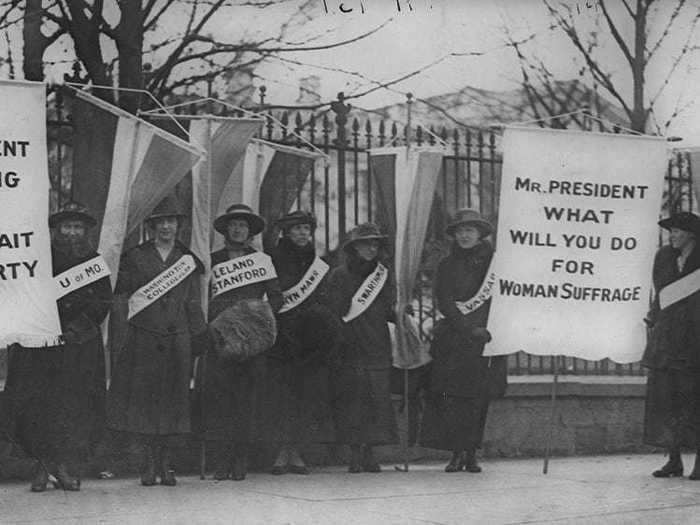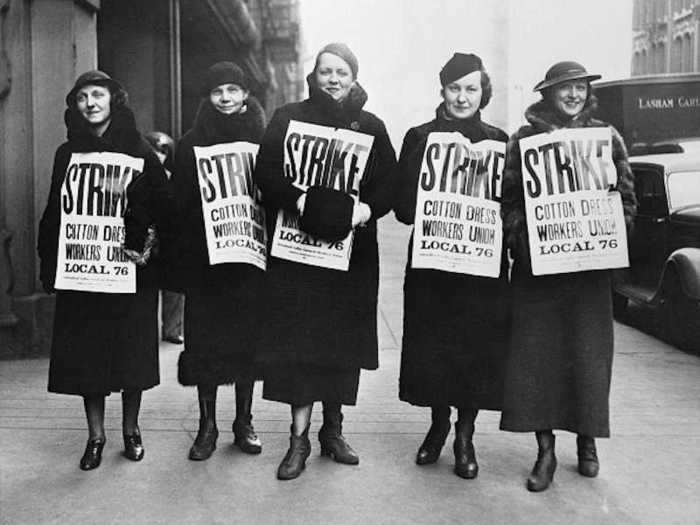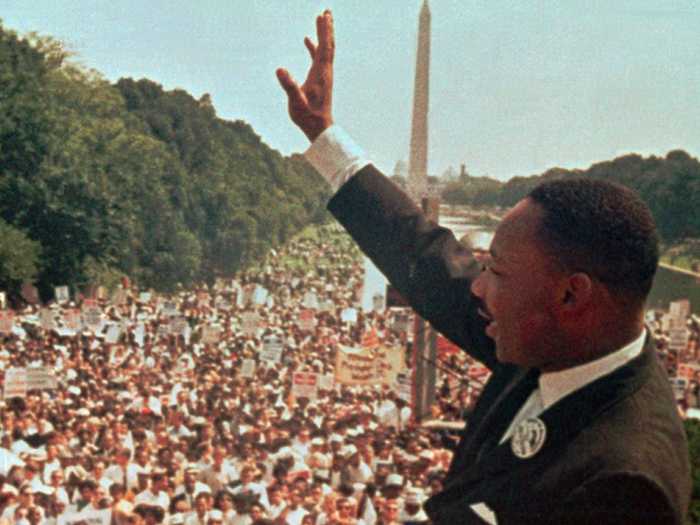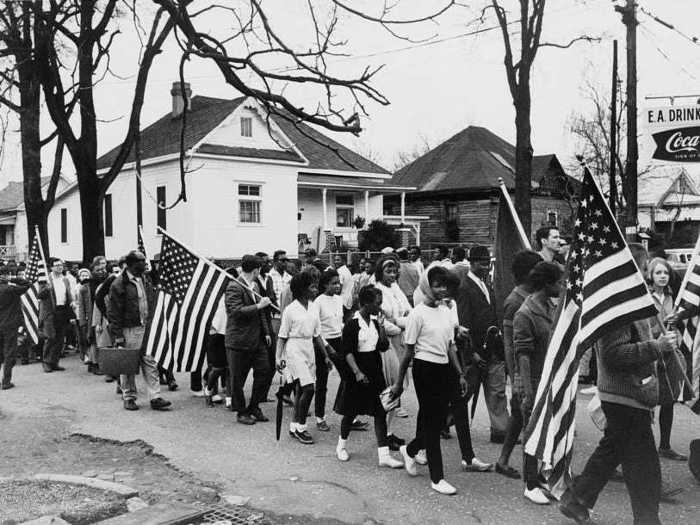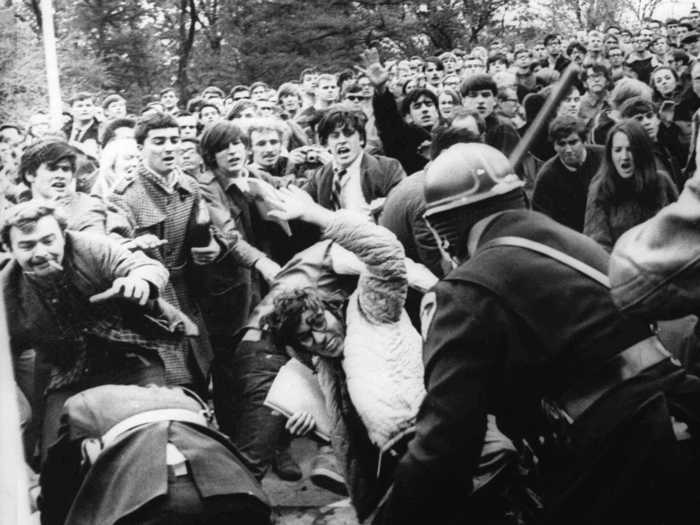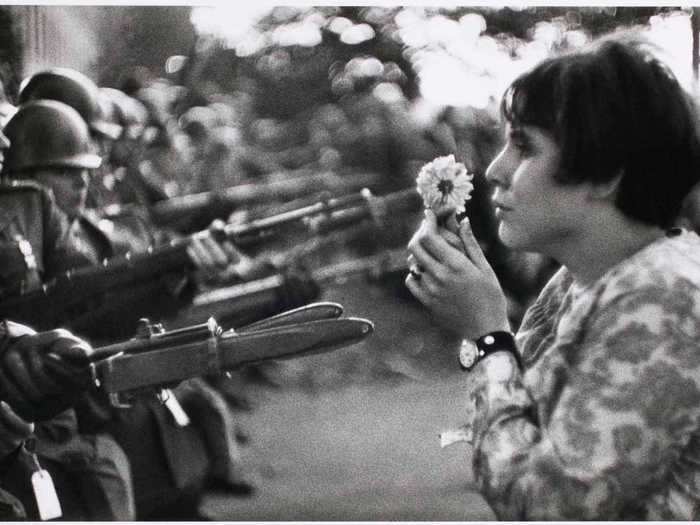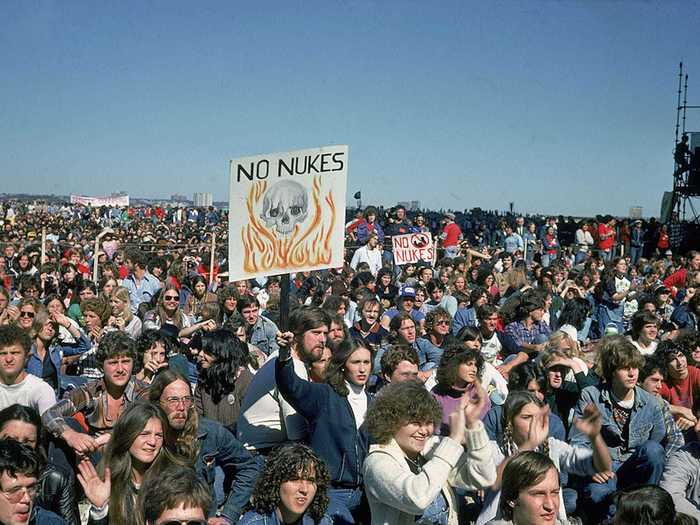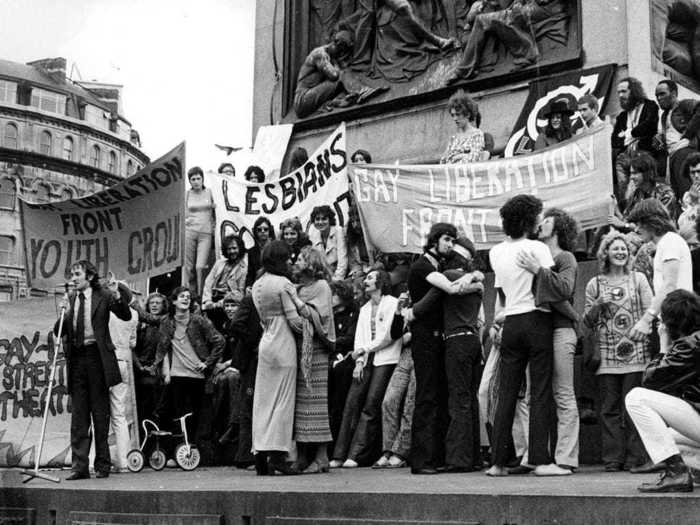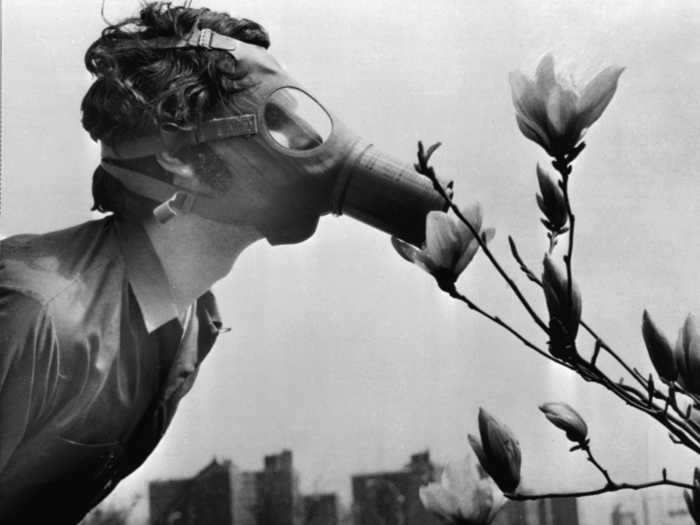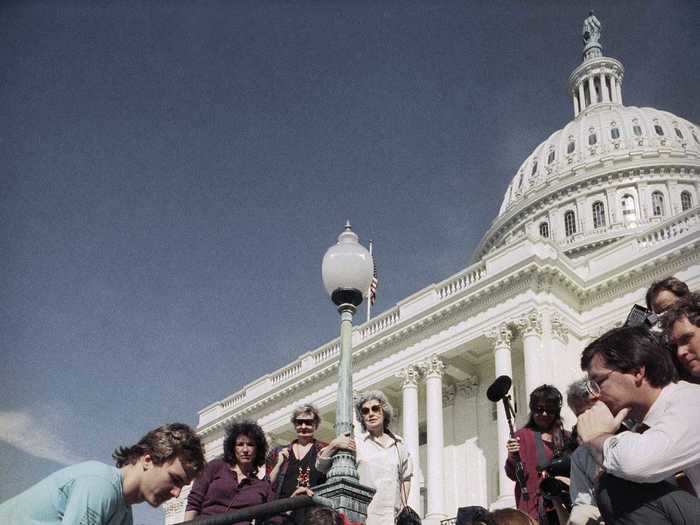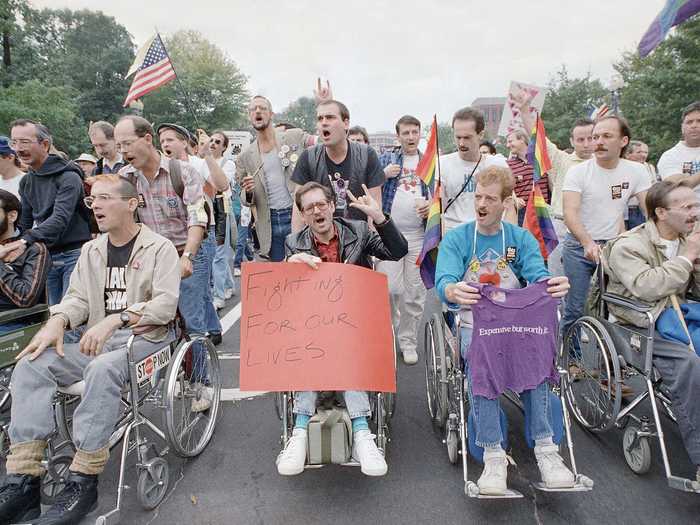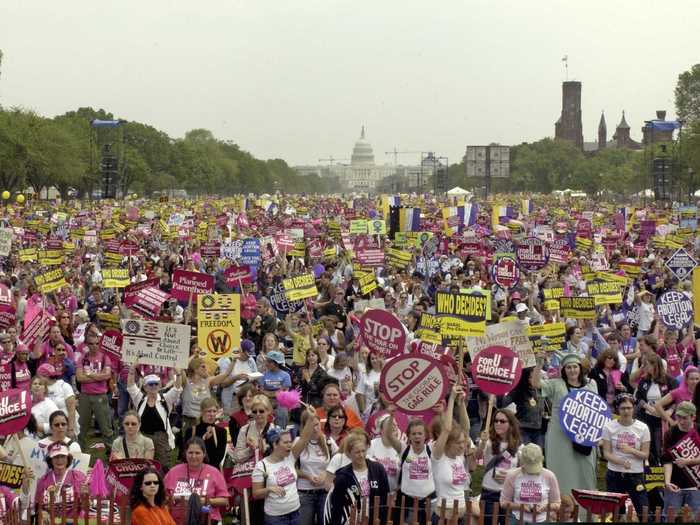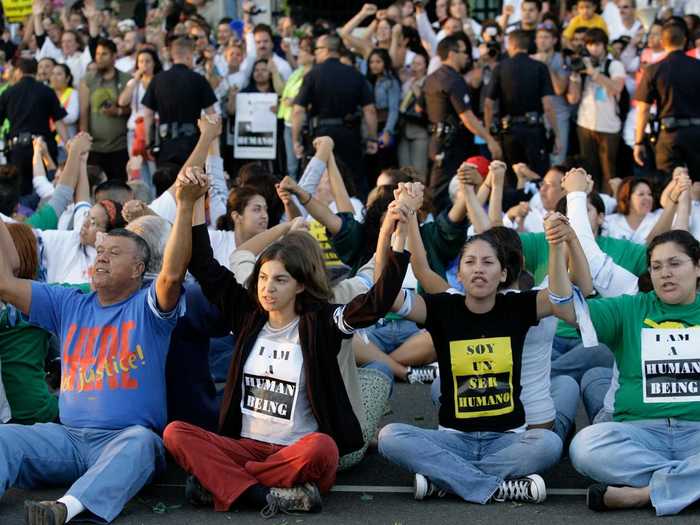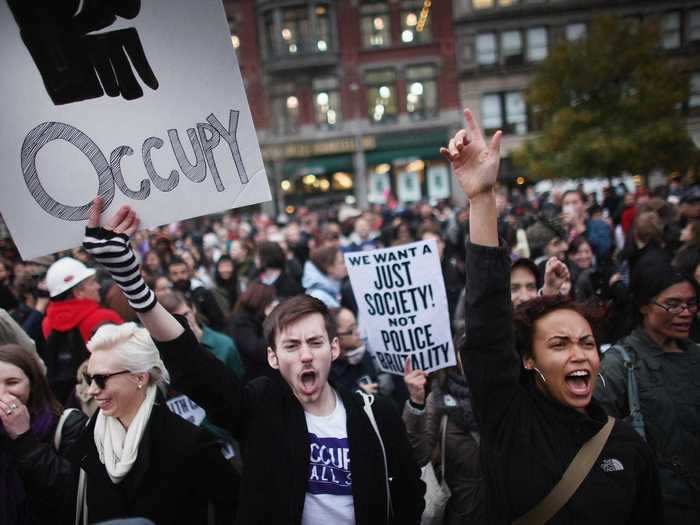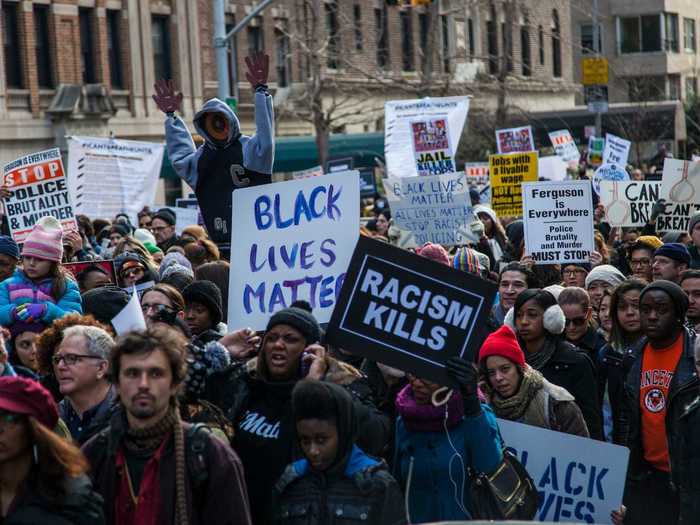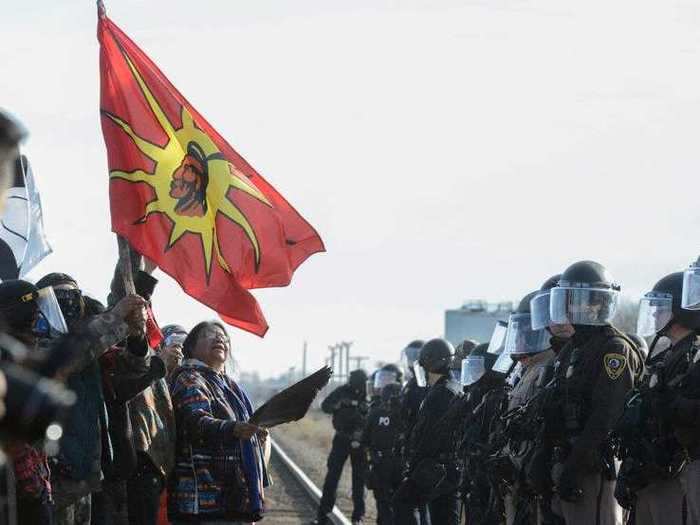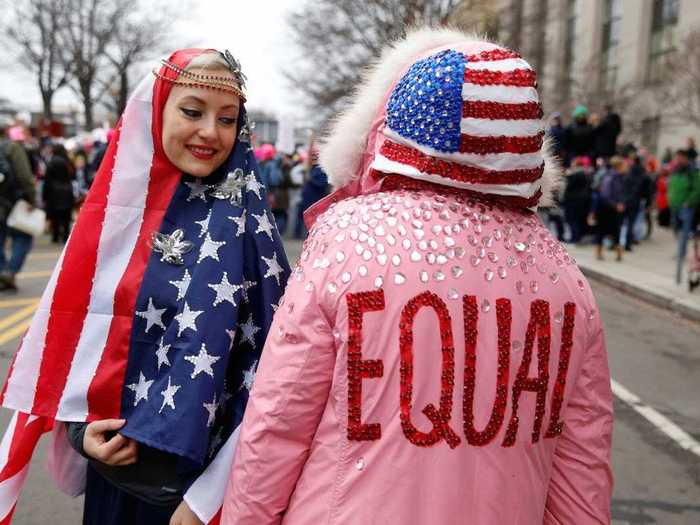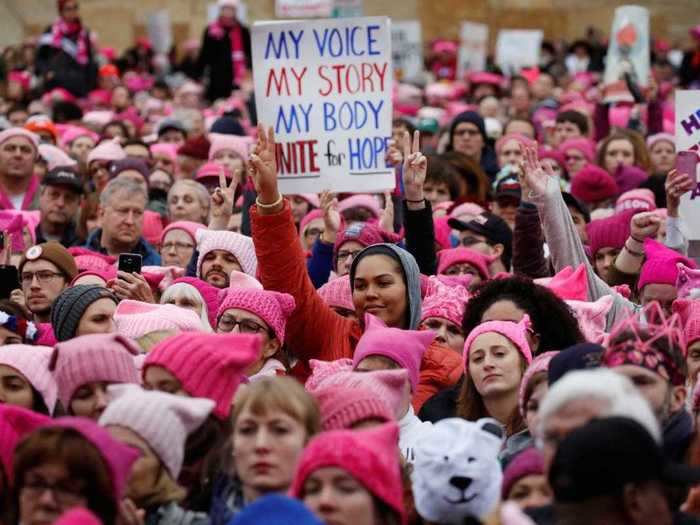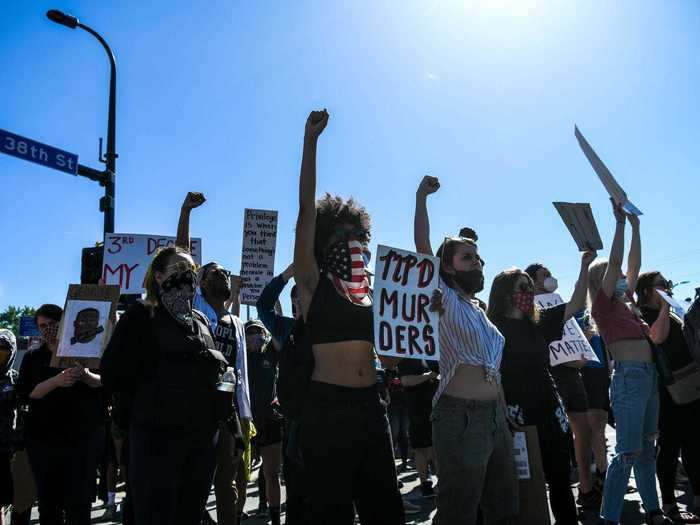Protesters in Portland, Oregon, on June 3, 2020.REUTERS/Terray Sylvester
- For over a week, tens of thousands of Americans have taken to the streets to fight against police brutality and racism.
- Following the death of George Floyd, a black man who was killed by a white police officer, protests to support the Black Lives Matter movement have popped up in all 50 states. Demonstrators are demanding an end to systemic racism and violence against Black Americans.
- This most recent wave of action reflects a long-stand history of Americans protesting to enact change. Here are 20 photos that chronicle some of that legacy.
Tens of thousands of Americans have been marching in the streets daily, demanding an end to police brutality and racism.
Following the murders of Ahmaud Arbery, Breonna Taylor, and George Floyd — let alone the countless others who have been overlooked — Americans have come together to fight for the Black Lives Matter movement and combat racial injustice.
This latest example of collective activism marks a longstanding history of Americans protesting for change.
In the early 1900s, women took to the streets to demand the ability to vote; during the civil rights movement hundreds of thousands of people marched against racism; and in the late 1960s, the Stonewall riots catapulted LGTBQ rights to the mainstream.
In more recent memory, the Women's March on Washington swelled to a half-million people after President Trump was elected. Throughout the past few years, rallies related to immigration, LGBTQ rights, and other issues have continued to pop up in cities around the country.
The recent wave of action for the Black Lives Matter movement is the latest in a long history of American activism. Here are 20 photos that chronicle some of that legacy.
In 1917, ten suffragists, who called themselves the "silent sentinels," were arrested when they picketed outside the White House. The women's suffrage movement is considered one of the first modern activist movements.
Women suffragists picket in front of the White House in 1917.
Wikipedia Commons
The labor movement, which also grew in the 20th century, fought for safe working conditions and increased pay and benefits for laborers.
Cotton goods factory and shop workers in Chicago were called to strike by the International Ladies' Garment Workers' Union in the 1930s. The group claimed a membership of 10,000.
Getty Images
The civil rights movement, which began in 1954, aimed to end racial inequality, segregation, and discrimination.
Martin Luther King Jr.
AP
At the 1963 March on Washington for Jobs and Freedom, which drew approximately 250,000 people, Dr. Martin Luther King Jr. delivered his famous "I Have a Dream" speech.
In one of three marches from Selma to Montgomery, Alabama, protesters joined together in response to the voting obstacles and threats of lynching that African Americans faced in the South.
Universities have historically been breeding grounds for contemporary activism. Starting in the early 1960s, many college students protested in opposition to the Vietnam War...
A riot police officer beats back an angry throng of University of Wisconsin protesters, Wednesday, October 19, 1967 on campus.
AP
... which helped spark a mainstream anti-war movement.
"The Flower and the Bayonet" by Marc Riboud, 1967.
Marc Riboud/Wikipedia Commons
In 1982, around a million people filled New York City’s Central Park to protest nuclear weapons during Ronald Reagan's presidency.
Anti-Nuclear March in New York.
Getty Images
The 1969 Stonewall riots catapulted the LGBT rights movement into the mainstream. Activists led three days of protests after the NYPD raided Stonewall Inn, a gay bar in Manhattan’s Greenwich Village neighborhood.
Wikipedia Commons
Though the environmental movement started in the 19th century, it gained more mainstream appeal in the mid-20th century. The US celebrated its first Earth Day on April 22, 1970.
A Pace College student in a gas mask "smells" a magnolia blossom on Earth Day, April 22, 1970, in New York.
AP
Around the same time, the disability rights movement began. Activists worked to end disability discrimination and institute more accessibility regulations.
A group of handicapped people led by 8-year-old Jennifer Keelan, left, crawl up the steps of the U.S. Capitol in Washington, March 12, 1990.
AP
With the PC boom in the '90s, protesters started leveraging the internet as a mobilization tool — though some efforts have been more successful than others. MoveOn.org, founded in 1998, was one of the first online platforms that allowed users to make petitions, fundraise, and organize marches.
Today, many activists use Facebook and Twitter to organize around issues.
When the HIV/AIDs epidemic hit in the ‘80s and ‘90s, LGBT rights activists urged the federal government to fund research and treatment. The Second National March on Washington for Lesbian and Gay Rights drew around 200,000 people in 1987.
AP/Scott Stewart
The modern women's rights movement, which began with suffrage, has since expanded to address reproductive rights, sexual violence, a lack of educational opportunities, and the wage gap. The March for Women's Lives took place in Washington DC in 2004.
March for Women’s Lives.
Reuters
Protests related to immigrant rights grew in the early 2000s. In 2006, hundreds of thousands of people protested against anti-immigration legislation in cities around the US, including Los Angeles and Chicago.
Protesters hold hands as they wait to be arrested by Los Angeles police officers, after refusing to leave a busy thoroughfare near Los Angeles International Airport while demanding unionization of mostly immigrant workers at a dozen high-end hotels in Los Angeles, Thursday, Sept. 28, 2006.
The Occupy Wall Street movement, which began in 2011, fought social and economic inequality worldwide, with emphasis on the influence corporations hold over the US government. The grassroots effort coined the rallying cry, "We are the 99%."
Spencer Platt/Getty
In 2013, the Black Lives Matter movement was established following the police killing of 17-year-old, Trayvon Martin. After the officer who killed Martin was acquitted, the movement took stronghold and people demanded an end to police brutality against Black Americans.
Thousands take part in the "Day of Outrage," protesting police brutality and murders after the recent grand jury decisions in the deaths of Eric Garner and Michael Brown.
Tony Savino/Corbis via Getty Images
In 2016, people started staging sit-ins at Standing Rock, an Indian reservation where the Dakota Access Pipeline is slated to be built. The protests are part of the Native American rights movement, which began in the early 19th century after President Andrew Jackson’s Indian Removal policy.
Protesters have a standoff with police during a demonstration against the Dakota Access pipeline near the Standing Rock Indian Reservation on Nov. 15, 2016.
Stephanie Keith/Reuters
In recent years, many activists have adopted the notion of intersectionality, which acknowledges the intersections of racism, sexism, class, homophobia, and more in the dynamics of power and oppression.
Gizelle Begler and Mira Veikley pose for a photograph at the Women's March in Washington.
Shannon Stapleton/Reuters
The idea was prevalent in the Women's March on Washington. "Women's rights are human rights, regardless of a woman's race, ethnicity, religion, immigration status, sexual identity, gender expression, economic status, age or disability," its organizers wrote.
Over 500,000 people descended on Washington for the Women's March in 2017. Since then, the march has become an annual protest to amplify the feminist movement.
A crowd at the Women's March on Washington, DC on January 21, 2017.
Shannon Stapleton/Reuters
Activists are still marching to make their voices heard, and many acknowledge that today’s protests are built on the work of past generations.
People take part in the Women's March in Washington, U.S. January 21, 2017.
Jonathan Ernst/Reuters
For more than a week, tens of thousands of Americans have taken to the streets to continue fighting for the Black Lives Matter movement. The killing of George Floyd and the persistent issue of police brutality against black Americans has led to widespread protests and urgent demand for change.
Protesters raise their fists as they protest at the makeshift memorial in honour of George Floyd, who died while in custody of the Minneapolis police, following a day of demonstration in a call for justice on May 30, 2020 in Minneapolis, Minnesota. - Demonstrations are being held across the US after George Floyd died in police custody on May 25.
Chandan Khanna/AFP via Getty Images
